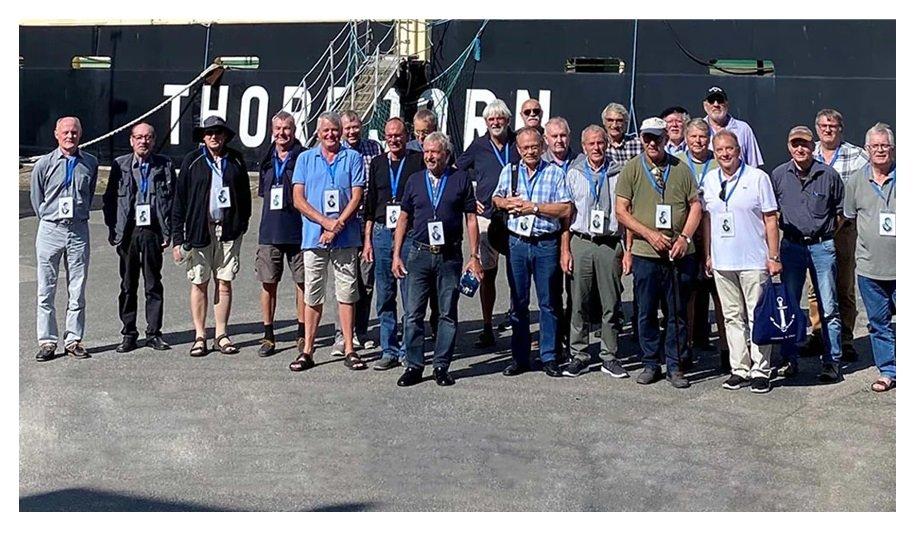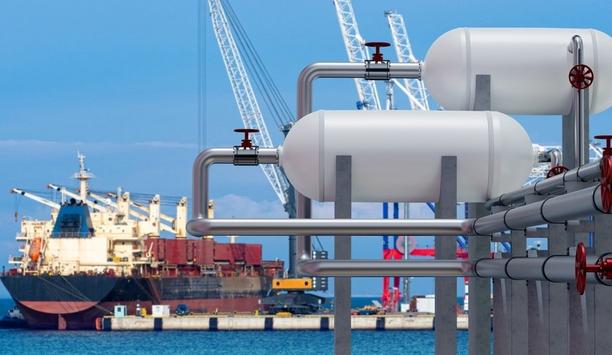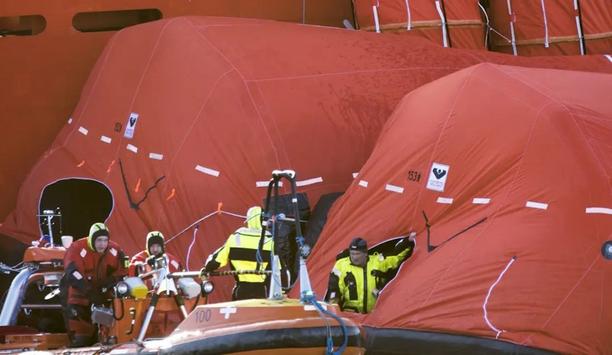A group of former students from the Danish Seaman’s School reunited after 50 years. Many began their careers onboard Maersk vessels – these are their personal recollections of their first experiences at sea.
Meet Johnny Ibsen, retired Captain at Maersk. After having spent most of his career with Maersk, Johnny Ibsen retired as a captain in 2018. He lives on the Danish island Funen with his wife and still frequently goes to sea – now paddling his kayak or with his teammates from the local freediving club.
First experiences at sea
“The decision to go to sea was made on a very specific day when I was around 12 years old, fishing and watching ships with comrades. So I started preparing to join the Seaman’s School, which I did in 1971.”
Back then, the school was organised as a ship, and the discipline was tough"
“Back then, the school was organised as a ship, and the discipline was tough. On the first day, those of us who had long hair were told to get a haircut the next day. ‘Too long’ hair meant that it touched your ears. This was a time, where long hair for men was fashionable, so we were a little sorry about that. When I later during the stay had ‘forgotten’ to go to the hairdresser, I was told off in the headmaster’s office. I was given a booklet in which I had to (in my spare time, of course) write ‘When I receive an order, it must be obeyed and complied with’ 400 times! It took me two nights. But except that, I really enjoyed the school.”
More interesting stretches
“After graduation, I embarked on Christian Maersk in Hamburg in 1972. I was 17 years old, and it was during the transition period from general cargo to container cargo, which meant a lot of hard, physical work for the young recruits. As a thank you, we were taken out to the city by the crew when we finally arrived in Singapore.”
“In Hong Kong, I changed vessel and embarked on Clara Maersk, which sailed between the US and the Far East. This was a good route. We had the relatively long sea voyages across the Pacific, where we all found our routine. And we had the more interesting stretches, as the US East and West Coast, as well as around the Far East. In the ports on these stretches, there was often plenty of time to go ashore and look at the sites, while the ship was unloaded and loaded. Life on board was quite social, as there was no internet or social media. So instead, there was a weekly movie night for everyone in the saloon, which was otherwise only used by the captain, chief mate and chief engineer.”
More interesting stretches
Life onboard was social – we played games, did rope works and other crafts"
“Life onboard was social – we played games, did rope works and other crafts, just as we usually had barbecue parties on Saturdays. It was indeed a mini-society on board back then – and I enjoyed it so much that I didn’t take any of my vacation.”
“Two years after my first day on a Maersk ship, and two months before Clara Maersk picked up around 4000 refugees, I left the ship and returned to Denmark to continue my education at the Danish Navigation School. I was determined to go back to sea as soon as possible.”
Mine-blasting missions
“Except for a 10-year break, which I spent with saturation divers onboard a vessel specialised in treasure hunting and later working for the Danish Maritime Authority, I spent all my career onboard Maersk vessels. The last 27 years of my career, I spend in Maersk Supply Service on board the cable-laying vessel Maersk Recorder – a ship that became ‘my baby’. We started out with a maiden voyage of 50,000 km, and in the following years, we would do one interesting offshore mission after another; including missions with saturation divers, big cable missions as well as mine-blasting missions in the North Sea.”
I have always been thankful for the training and mentoring I received from the experienced captains"
“Throughout my career, I have always been thankful for the training and mentoring I received from the experienced captains. And later, when I was the one in the ‘hot seat’, I really appreciated the support we got from the young deck officers and engineers, who came directly from the schools with the latest knowledge. I think we really illustrated the benefits of knowledge exchange, and I think that this is exactly where we in Maersk have always found our strengths: The flat structure of hierarchy onboard has provided – and continues to provide – the best possibilities for support and training – across different positions and generations.”
Young deck officers
Meet Elo Jacobsen retired Commander at the Royal Danish Navy and Former Seafarer at Maersk. Following journeys onboard Cornelia Maersk and Lica Maersk, Elo Jacobsen left Maersk after completing his Masters Degree in 1977. He spent his career working as an officer in The Royal Danish Navy and retired as Commander in 2014. Elo lives on the Danish island Bornholm.
“When I was told that my first enlistment was to be on the tanker Sofie Maersk, I was in no way thrilled. There were so many other hires, which to me seemed more interesting – but time would show that I would come to appreciate it. I was to board at Pointe a Pierre in Trinidad and Tobago, and I was to fly from my hometown Rønne to Copenhagen – London – Port of Spain. I had never been on an airplane before, and it was therefore with great excitement that I boarded the plane on 16 June 1972.”
Most boring tasks
On my first day, I turned up on the bridge at 7 in the morning, thinking that I was, after all, a deck cadet"
“On my first day, I turned up on the bridge at 7 in the morning, thinking that I was, after all, a deck cadet. The chief officer just looked strangely at me and said: “Go to the Bosun down in the duty mess. He will put you to work. Most of the work onboard consisted of knocking rust and painting the vessel – and there was plenty to do. These were the most boring tasks, but there were also plenty of other more interesting tasks.”
“When I had time off, I often went to the bridge. Every day at 12, I went up to get the position of the ships and to hear some good anecdotes from the chief officer. Back then, the crew was a lot bigger than it is today – and life on board suited me well. We had a lot of social activities, games and gatherings – and I took it upon myself to always look for new films when we reached new ports. This was not always an easy task.”
Many good memories
“In 1972, I also celebrated my first Christmas at sea. The entire crew was invited to the dining saloon where the captain handed out telegrams from home – and then we got a glass of sherry. For dinner, we had everything the heart could desire, and afterwards people spent some time alone reading the telegrams and letters, before we all met again later for the party. The years I spent with Maersk brought many good memories both at sea and on shore.”
The entire crew was invited to the dining saloon where the captain handed out telegrams from home"
“For a young boy, it was truly mind-blowing to suddenly find himself out in the world and to experience places and new cultures that I had never dreamed of. Even though I ended up spending the majority of my career outside the company, the things I learned – and the experiences I had – have stayed with me.”
Necessary competencies and certificates
When the experienced sailor Captain Peter Maersk Møller, the father of A.P. Møller, 1884 chose to pursue a career in steamships, he had to go back to the school bench to obtain the necessary competencies and certificates to live up to the safety demands.
And so it has been ever since. Generations of deck officers and engineers, who have boarded steamships and all other types of vessels in the Maersk shipping companies, have had formal training, and many cadets graduated from the Danish Seaman’s School. Here, the theory was practised before enlistment, adding experience from the daily work at sea. The purpose remains the same: To contribute to the safe and efficient operation of the vessels.








